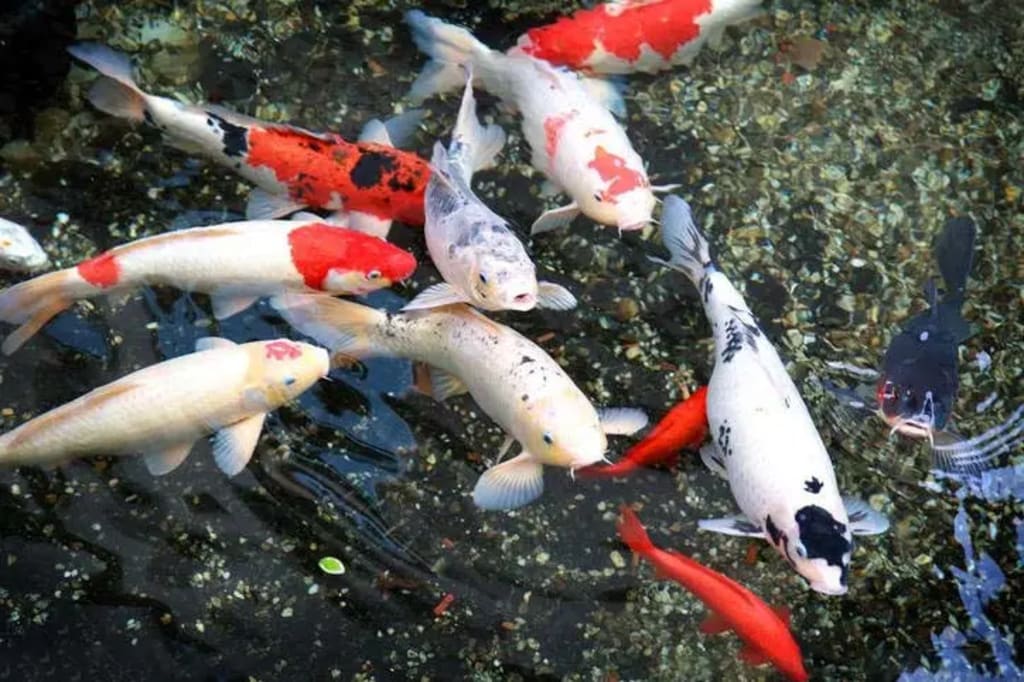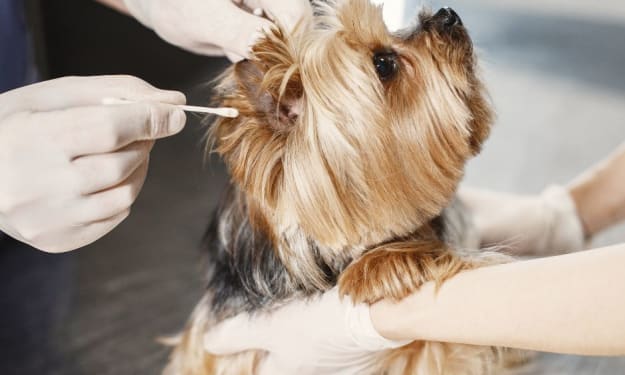How to raise bait and feed koi fish
Koi fish how to raise, there are some high ornamental value of the fish is also the object of many families to raise, but the fish must pay attention to the water quality, otherwise they are very easy to get sick or die. Koi fish is also a very beautiful ornamental fish, now there are also a lot of families raising koi fish, but for the novice fish should be how to raise them?

Koi fish how to raise, there are some high ornamental value of the fish is also the object of many families to raise, but the fish must pay attention to the water quality, otherwise they are very easy to get sick or die. Koi fish is also a very beautiful ornamental fish, now there are also a lot of families raising koi fish, but for the novice fish should be how to raise them?
Methods:
After water, sterilization, into the tank, feed once a day is good, family feeding to master the following points:
1. Selection and configuration of aquarium cylinder
To choose different specifications of aquarium tank according to family conditions, but because of the different living habits of koi and goldfish, this large body activity is also strong, so the choice of aquarium tank should not be too small, the general water capacity is not less than 60 kg. For larger koi, the tank should be properly enlarged and the water capacity should not be less than 200 kg. Because koi's activity is large, oxygen consumption is strong, so the aquarium tank should be equipped with water filter and oxygenation pump, to ensure that there is sufficient oxygen in the water and the water quality is clean.
2. Bait and feeding method
Koi is a kind of omnivorous fish, no matter animal feed or plant feed can be used as koi bait, such as daphnia, water earthworm, rice pasta, etc. However, it is better to choose synthetic bait for ornamental fish. When feeding with tank feeding bait, special attention should be paid to the feeding amount should not be too large, according to the daily ornamental situation of feeding only seven or eight percent can be full, otherwise it will cause adverse consequences, light will cause fish dyspepsia, heavy leftovers damage water quality, cloudy and rainy days, do not feed at night.
3. Water quality and temperature
The feeding conditions of koi are different from those of goldfish. It needs high water quality, and the pH is neutral (pH 7-7.4). Aquarium tank dirty white water is the most likely to occur dead fish, this situation, should take timely measures or replace all the water. The water temperature is generally kept between 15 and 25℃.
4, should not be mixed
Koi is an omnivorous large ornamental fish, a variety of ornamental fish living habits are different, so it is best not to be mixed with other ornamental fish.
In RAISING KOI, SINCE everyone HAS DIFFERENT hobbies AND feeding conditions, THE selection OF KOi should be based on personal hobbies, feeding level and family conditions. The following points should be noted when choosing:
One is to choose the koi with the correct body shape. Because koi carp and other fish, in the genetic occurrence of some abnormalities, some young fish have congenital abnormalities, such as skewed head, body bending, etc., this fish does not have any ornamental value, should be eliminated first.
The second is to pay attention to whether the fish body has obvious trauma, bleeding and other symptoms. Although some fish do not have disease of apparent trauma, but swimming sluggish sluggish, inappetenence, often float at water surface or TIE UP IN THE corner OF AQUATIC animals box do not move, THE ORGAN INSIDE this shows fish body suffers from other disease
Environmental requirements
Koi and goldfish like water temperature, water quality requirements are not strict, suitable temperature range of 2℃ ~ 30℃, but can not resist sudden change of water temperature, temperature difference suddenly more than 2℃ ~ 3℃ Koi will appear discomfort, the optimal water temperature is 20℃ ~ 25℃; Demand sufficient oxygen, suitable for living in the slightly alkaline, low hardness of the water environment.
Feeding requirements
Koi carp are omnivorous fish and can be eaten by mollusks, fragments of higher aquatic plants, benthic animals, fine algae or synthetic particles.
Species selection
Fish with a healthy body, free from injury, descaling and other diseases, and a bright, diverse and well-defined body should be selected.
Breeding density
The common carp is a very adaptable fish, and koi retain this trait. They can be kept anywhere from a fish tank to an outdoor pond, and they can quickly grow to 30cm long or larger, making a traditional indoor fish tank less attractive than a round plastic bowl. Koi are cold water fish, so it is best to keep koi at a depth of half a meter or more where the summer is hot.
For general stocking density, refer to the density table of stocking koi; Aquarium density is generally 60 cm ×30 cm ×15 cm can be stocked 15 cm to 20 cm body length of koi 6 tail; 90 cm x 30 cm x 50 cm can be stocked 8; 110 cm x 30 cm x 50 cm can be stocked with 10 animals.
Bait feeding
Koi is omnivorous fish, it is best to feed synthetic particles, bait, bean cake, vegetable cake, bread crumbs, fish worms, clams, crab meat, TURNip, duckweed and so on. It is better to feed the fish regularly to avoid stress reaction.
Management of the four seasons
Koi with seasonal temperature changes, its management methods are also different.
In spring, the weather is warm and cold, koi began to recover from hibernation, feeding from indoor to outdoor, but special attention should be paid to sudden cooling, to cover the film in time, keep the water temperature stable; The bait is mainly plant bait, and the amount is gradually increased from less to better digestion and absorption of koi carp.
Summer, the weather is very hot, must be covered with plastic shading net, to prevent direct sunlight, sunlight illumination from 8000 ~ 12000 lux to 5500 ~ 5800 lux is the most suitable.
Autumn, the weather less rain more sunny, water temperature drops obviously, the most suitable for koi growth, can increase the proportion of animal (protein), such as silkworm pupa, etc. Increase investment to promote rapid growth.
In winter, the weather is cold, when the temperature drops to 0℃, koi should be transferred to the indoor pond in time for overwintering, indoor water temperature should be maintained at 2℃ ~ 10℃, attention is focused on heat preservation, appropriate bait, fat prevention, from November to March the next year for koi overwintering period.





Comments
There are no comments for this story
Be the first to respond and start the conversation.